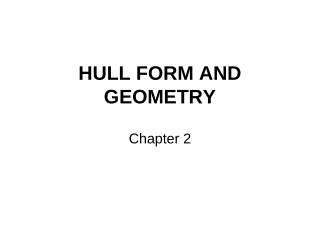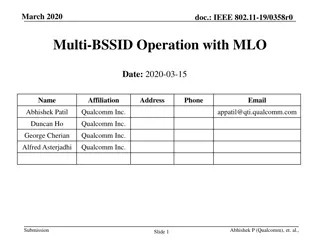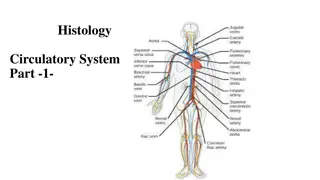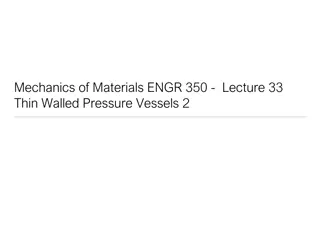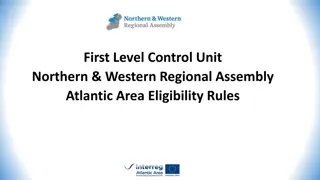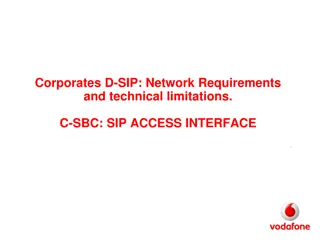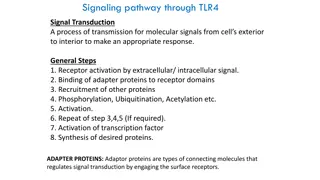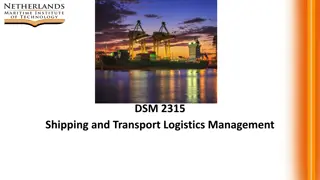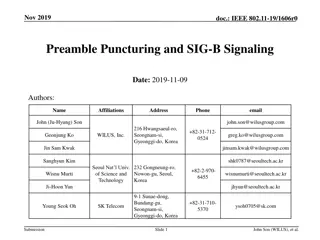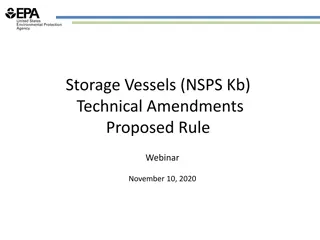Navigational Rules and Signaling for Vessels
Navigational rules and signaling procedures detailed in Rules 32 to 34 for vessels include definitions of whistle blasts, required signaling equipment based on vessel size, maneuvering and warning signals, and indications for overtaking situations. Vessels must use prescribed whistle signals or flashing lights for communication to ensure safe navigation and passage.
Download Presentation

Please find below an Image/Link to download the presentation.
The content on the website is provided AS IS for your information and personal use only. It may not be sold, licensed, or shared on other websites without obtaining consent from the author.If you encounter any issues during the download, it is possible that the publisher has removed the file from their server.
You are allowed to download the files provided on this website for personal or commercial use, subject to the condition that they are used lawfully. All files are the property of their respective owners.
The content on the website is provided AS IS for your information and personal use only. It may not be sold, licensed, or shared on other websites without obtaining consent from the author.
E N D
Presentation Transcript
NS101 Rules of the Road 32-37
Rule 32 - Definitions Whistle - any sound signaling appliance capable of producing the prescribed blasts. Short blast - a blast of 1 second in duration. Prolonged blast -a blast of 4-6 seconds duration.
Rule 33 - Equipment for Sound Vessels are required to provide the following signaling devices: Less than 20m: some means of making an efficient signal. Greater than 20m and less than 100m: A whistle and a bell. Vessels greater than 100m: Must also provide a gong, the tone of which cannot be confused with a bell.
Rule 34 Maneuvering and Warning Signals Power driven vessels in sight of one another and meeting or crossing at a distance within half of a mile of each other (both underway), when maneuvering, must use the following whistle signals: International Inland One short blast means, I am altering my course to starboard. One short blast means, I intend to leave you on my port side. Two short blast means, I am altering my course to port. Two short blast means, I intend to leave you on my starboard side. Three short blasts means, I am operating astern propulsion. Three short blasts means, I am operating astern propulsion. Upon hearing the one or two short blast signal of another vessel, if in agreement sound the same signal and take steps necessary to ensure safe passage. If not in agreement or unsure of intentions, she shall sound five short blasts (the danger signal), and each ship will make precautionary measures until a safe passing agreement is reached.
Flashing lights may be substituted for the signals. The light must be white or yellow, and have a range of at least 5 miles (international) or 2 miles (inland). International Inland One light means, I am altering my course to starboard. One light means, I intend to leave you on my port side. Two lights means, I am altering my course to port. Two lights means, I intend to leave you on my starboard side. Three lights means, I am operating astern propulsion. Three lights means, I am operating astern propulsion.
In an overtaking situation, the power driven vessel intending to overtake another power driven vessel shall indicate her intentions by the following whistle signals: Inland International One short blast means, I intend to overtake you on your starboard side. Two prolonged and one short blast means, I intend to overtake you on your starboard side. Two short blast means, I intend to overtake you on your port side. Two prolonged and two short blast means, I intend to overtake you on your port side. Sound the same signal if you agree with the intention One prolonged, one short, one prolonged, one short blast means, I agree with your intentions. If not in agreement sound five short blasts
Rule 34 Maneuvering and Warning Signals A vessel nearing a bend or an area of a channel or fairway where other vessels may be obstructed, shall sound one prolonged blast. Any vessel approaching shall repeat the signal. When a power driven vessel is leaving a dock or berth, she shall sound one prolonged blast (INLAND ONLY).
Rule 34 Maneuvering and Warning Signals If a vessel reaches agreement on radio- telephone, signals are not required, but optional. If no agreement is reached, whistle signals shall be exchanged in a timely manner and shall prevail.
Rule 35 Signals in Restricted Visibility Power driven vessel underway: One prolonged blast NMT 2 minute interval. Power driven vessel underway but not making way: Two prolonged blasts with a 2 second gap NMT 2 minute interval.
Rule 35 Signals in Restricted Visibility The following vessels shall sound one prolonged followed by two short blasts NMT 2 minute interval: Not Under Command Restricted in Ability to Maneuver (u/w or at anchor) Sailing vessel Fishing vessel (u/w or at anchor) Towing or pushing Last vessel in a tow (if manned): One prolonged followed by three short blasts every 2 minutes. This should be sounded immediately after the tug that makes her signal.
Rule 35 Signals in Restricted Visibility Vessel at anchor shall sound at intervals of not more than one minute ring the bell rapidly for about 5 seconds. > 100m: the bell sound forward then a gong sounds aft for about 5 seconds. Optional signal: Vessel aground shall sound the same signal as a vessel at anchor, with three separate and distinct strokes on the bell before and after the rapid ringing of the bell. <100m: 3 strikes/rapid bell/3 strikes >100m: 3 strikes/rapid bell/3 strikes/rapid gong Optional signal:
Rule 35 Signals in Restricted Visibility Vessel <12m is not obliged to give the above signals, but must make some efficient sound signal at intervals not to exceed 2 minutes. Pilot vessel when engaged in piloting duty may, in addition to the signals prescribed earlier, sound four short blasts.
Rule 36 Signals to Attract Attention If necessary to attract the attention of another vessel, any vessel may make light or sound signals that cannot be mistaken for any signal authorized elsewhere in these Rules, or may direct the beam of her searchlight in the direction of the danger, in such a way as not to embarrass any vessel.
Rule 37 - Distress Signals When a vessel is in distress and requires assistance, she shall use or exhibit the signals described below: a. Red star shells b. Black ball and square in orange background c. Dye marker d. Radio telegraph e. Fog horn sounding f. SOS ( --- ) g. Code flags November Charlie h. Radio telephone i. Flames on vessel j. Mayday by radio k. Square flag and ball l. Position indicating alarm radio beacon m. Gun fired at 1 minute intervals n. Parachute red flare o. Wave arms over head p. Smoke q. A high intensity white flashing light at regular intervals from 50 - 70 flashes (Inland rules only).
Rule 38 - Exemptions Old ships (keel laid prior to these rules taking effect) have between 4 and 9 years to comply with items not permanently exempted.


